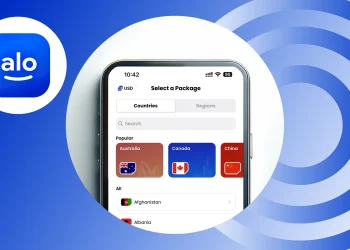The increasing reliance on digital platforms for financial transactions has made cybersecurity a critical concern. Cybercriminals are exploiting vulnerabilities in online banking, mobile payments, and e-commerce, siphoning millions of shillings daily from unsuspecting individuals. Even as security agencies intensify efforts to counter these threats, hackers continue to develop sophisticated tactics to outwit them. Protecting yourself requires adopting proactive measures to secure your online accounts and sensitive data.
Below, we detail effective strategies to safeguard your finances and personal information from hackers.
1. Enable Two-Factor Authentication
Two-factor authentication (2FA) is one of the most reliable ways to secure online accounts. Many platforms, including banking, financial, and social media services, now offer 2FA to enhance user security. This method adds an extra layer of protection by requiring a secondary verification step—such as a one-time code sent to your mobile device—after entering your password.
With 2FA enabled, even if hackers gain access to your password, they cannot log into your account without completing the second verification step. Enable 2FA on all your critical accounts to stay one step ahead of cybercriminals.
2. Use Strong, Unique Passwords
A strong password is a simple yet powerful tool in your cybersecurity arsenal. Experts recommend creating complex passwords that include a mix of uppercase and lowercase letters, numbers, and symbols. Avoid using predictable phrases, such as your name or date of birth, as these are easy for hackers to guess.
Additionally, refrain from reusing passwords across multiple platforms. A data breach on one platform could give hackers access to your other accounts. Consider using a reputable password manager to generate and store unique passwords securely.
3. Never Share Sensitive Information
Social engineering scams have become increasingly sophisticated, with hackers impersonating trusted institutions to trick individuals into sharing sensitive information. These scams often involve fake phone calls, emails, or messages that appear to be from banks, government agencies, or other reputable organizations.
To protect yourself:
- Verify the authenticity of the request by contacting the institution directly.
- Avoid sharing information such as credit card details, PINs, or account credentials, even if the request seems legitimate.
Remember, genuine institutions will never ask for sensitive information through unsolicited communication.
4. Secure Your Credit Cards
Credit card details, including the card number, expiration date, and CVV, are the primary targets for cybercriminals. To minimize risks:
- Avoid disclosing your card details unless necessary.
- Use virtual credit cards or prepaid cards for online transactions.
- Immediately report lost or stolen cards to the issuing institution to block unauthorized access.
Prepaid cards are particularly effective, as they allow users to load a specific amount for online purchases, reducing potential financial losses.
5. Be Wary of Fake Websites
Hackers often create counterfeit websites designed to look like legitimate ones. These fake sites trick users into entering their login credentials or financial information. To ensure you’re using a safe platform:
- Always verify the website’s URL. Legitimate websites usually start with “https://” and display a padlock icon in the address bar.
- Avoid entering sensitive information on websites that look suspicious or lack proper security features.
Using prepaid cards for online shopping adds an extra layer of security by limiting the amount of money at risk.
6. Avoid Clicking on Suspicious Links
Phishing attacks are a common tactic hackers use to distribute malware. Scammers often send emails or messages with links claiming to be from trusted institutions. Clicking on these links can result in malware being installed on your device, granting hackers access to your sensitive information.
Protect yourself by:
- Avoiding links from unknown sources.
- Double-checking links in emails, even if they appear to come from legitimate institutions.
- Hovering over links to view the URL before clicking.
7. Keep Your Devices and Software Updated
Outdated software often contains security vulnerabilities that hackers can exploit. Ensure your devices, operating systems, and applications are updated regularly with the latest security patches. Most updates address known vulnerabilities, making it harder for hackers to penetrate your systems.
Enable automatic updates where possible to keep your software secure without manual intervention.
8. Use Reliable Antivirus Software
Antivirus software provides an essential defense against malware and other cyber threats. Install trusted antivirus programs on all your devices and ensure they are updated regularly. These programs can detect and neutralize threats before they cause harm.
9. Monitor Your Financial Accounts
Regularly review your bank and credit card statements for any unauthorized transactions. Early detection of suspicious activity allows you to take immediate action, such as reporting the issue to your bank and freezing your account.
Consider setting up alerts for transactions to receive real-time notifications of activity on your accounts.
10. Educate Yourself and Stay Informed
Cybercriminals continuously evolve their tactics, and staying informed is crucial. Follow trusted cybersecurity resources to learn about emerging threats and how to combat them. Awareness is your first line of defense against cyberattacks.
Final Thoughts
In the digital age, safeguarding your financial and personal information requires vigilance and proactive measures. By enabling two-factor authentication, using strong passwords, avoiding suspicious links, and adopting other best practices, you can significantly reduce the risk of falling victim to cybercrime.
Cybersecurity is not just the responsibility of security agencies but a shared duty for everyone. Take the necessary steps to protect yourself and encourage others to do the same.
Stay safe online and remember that prevention is better than cure.













